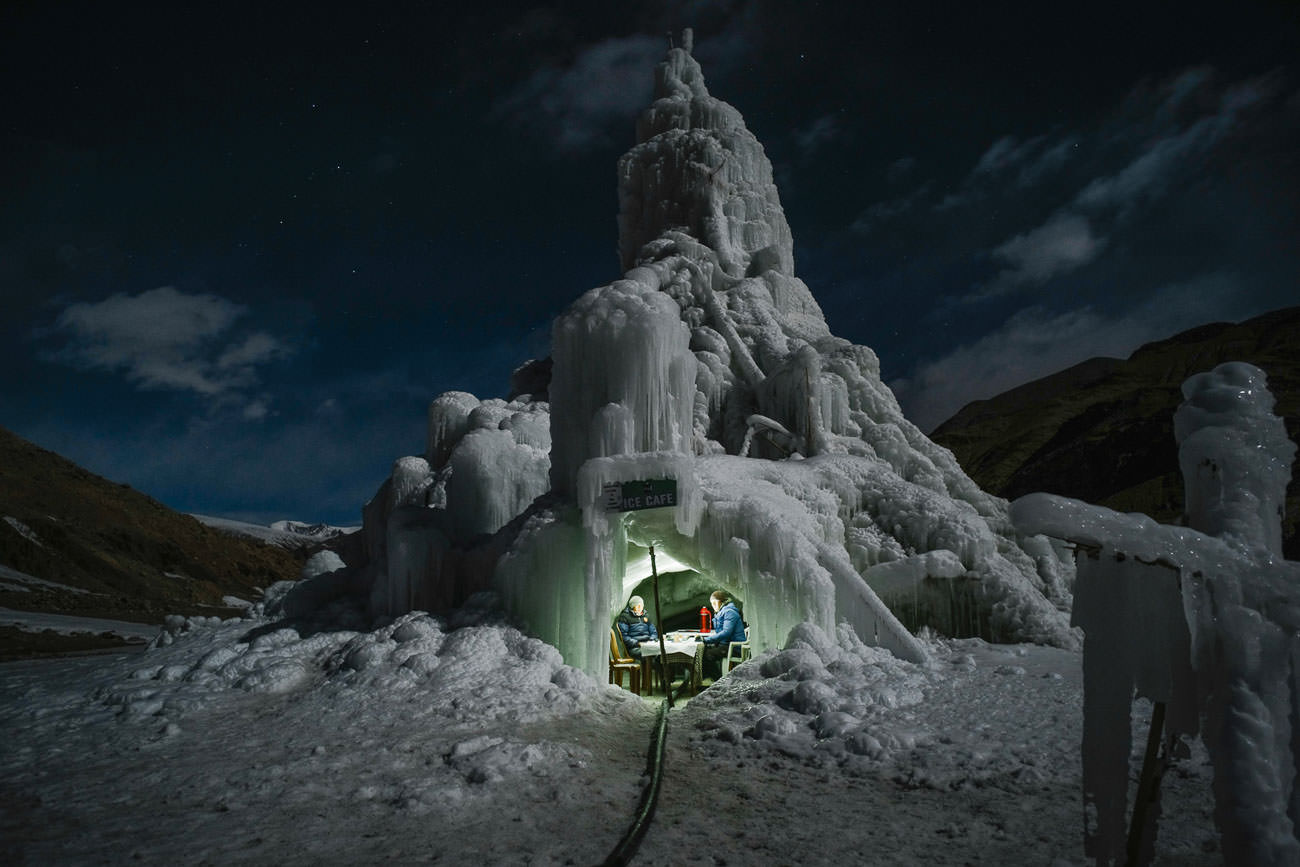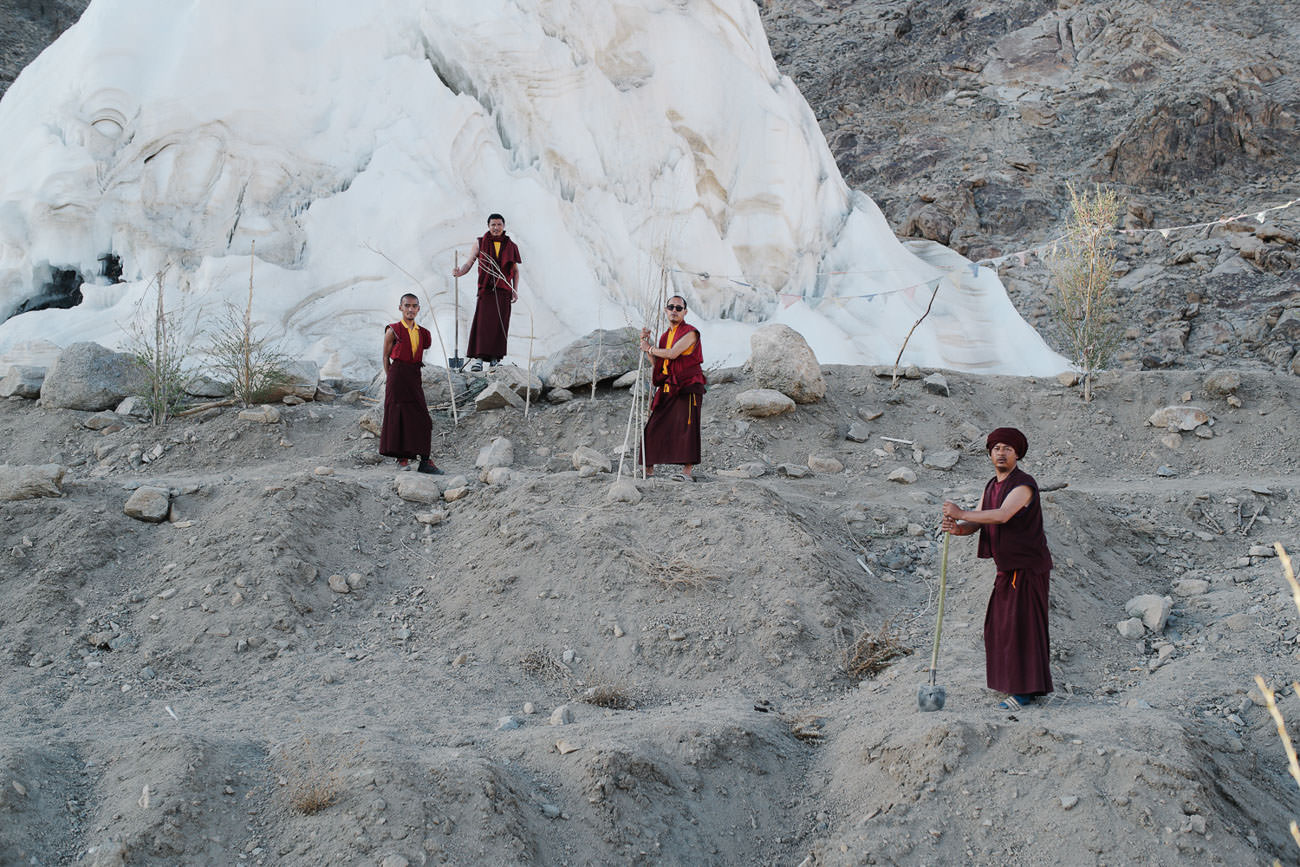The Ice Stupas — Artificial Glaciers in the Himalayas
In the last decades the communities in the Himalayan mountains of the Ladakh region in India have started to become climate refugees forced to abandon their valleys due to water issues. The Himalayan glaciers have been receding and water scarcity has never been so dire. A few years ago, the ingenuity of Sonam Wangchuk, a Ladakhi engineer and innovator, brought about a beacon of hope. In 2015, he prototyped ice stupas, artificial glaciers resembling Tibetan religious stupas that store winter meltwater and slowly release it for the growing season in spring, when water is most needed. At the inauguration of the project in 2015, roughly 1,000 villagers planted 5,300 saplings of willow and poplar trees using melted water from the ice stupas. The desert became cultivated land. In the years that followed numerous villages in Ladakhi region started to build ice stupas every winter. In winter in 2019 several valleys built their own ice stupas. In the eyes of the Wangchuk, the founder of the Ice Stupa International, the ice stupas should not be considered as a solution to the challenge. In his view, they stand for a final attempt of the Himalayan mountain communities to fight climate change. The real solution, in his opinion, lies in the responsibility of the nations’ governments and people living in urban areas that should adopt environmentally-friendly lifestyles to reduce emissions. I have been following Wangchuk and his team’s efforts almost from the start. As a documentary photographer, I soon understood the importance of the visual representation of this story. In 2018 and 2019 I visited the region to document the incredible scale and impact of the Ice Stupa movement.
写真家について
Ciril Jazbec is a documentary photographer born in Slovenia in 1987. Before moving to London he studied Management in Ljubljana. He obtained his master’s degree in Photojournalism and Documentary Photography at the London College of Communication. He has been working as a contributing photographer for National Geographic Magazine since 2014. His work is focused on communities that are confronted by the effects of globalization and climate change. For his work he was awarded — the winner of Leica Oskar Barnack Newcomer Award 2013, the winner at Photo Folio Review Les Rencontres d’Arles 2013, the winner of Magnum 30 under 30 2015, PDN’30 New and emerging photographers to watch 2016, Pictures of the Year International 2018 etc. His work has been featured in — National Geographic Magazine, The New York Times, GEO, Der Spiegel, Neu Zürcher Zeitung, Marie Claire Italy, Leica Fotografie International, Wired UK, British Journal of Photography etc.
ウェブサイト: ciriljazbec.com



